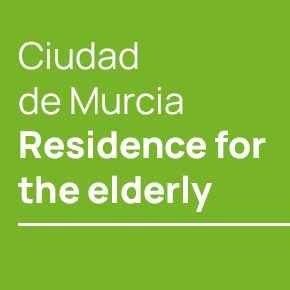-



 Welcome To
Welcome To BULLAS
BULLAS


 Welcome To
Welcome To BULLAS
BULLAS


 Welcome To
Welcome To BULLAS
BULLAS
- Region
- Águilas
- Alhama de Murcia
- Jumilla
- Lorca
- Los Alcázares
- Mazarrón
- San Javier
-
ALL AREAS & TOWNS
- AREAS
- SOUTH WEST
- MAR MENOR
- MURCIA CITY & CENTRAL
- NORTH & NORTH WEST
- TOWNS
- Abanilla
- Abarán
- Aguilas
- Alamillo
- Alcantarilla
- Aledo
- Alhama de Murcia
- Archena
- Balsicas
- Blanca
- Bolnuevo
- Bullas
- Cañadas del Romero
- Cabo de Palos
- Calasparra
- Camping Bolnuevo
- Campo De Ricote
- Camposol
- Canada De La Lena
- Caravaca de la Cruz
- Cartagena
- Cehegin
- Ceuti
- Cieza
- Condado de Alhama
- Corvera
- Costa Cálida
- Cuevas De Almanzora
- Cuevas de Reyllo
- El Carmoli
- El Mojon
- El Molino (Puerto Lumbreras)
- El Pareton / Cantareros
- El Raso
- El Valle Golf Resort
- Fortuna
- Fuente Alamo
- Hacienda del Alamo Golf Resort
- Hacienda Riquelme Golf Resort
- Isla Plana
- Islas Menores & Mar de Cristal
- Jumilla
- La Azohia
- La Charca
- La Manga Club
- La Manga del Mar Menor
- La Pinilla
- La Puebla
- La Torre
- La Torre Golf Resort
- La Unión
- Las Palas
- Las Ramblas
- Las Ramblas Golf
- Las Torres de Cotillas
- Leiva
- Librilla
- Lo Pagan
- Lo Santiago
- Lorca
- Lorquí
- Los Alcázares
- Los Balcones
- Los Belones
- Los Canovas
- Los Nietos
- Los Perez (Tallante)
- Los Urrutias
- Los Ventorrillos
- Mar De Cristal
- Mar Menor
- Mar Menor Golf Resort
- Mazarrón
- Mazarrón Country Club
- Molina de Segura
- Moratalla
- Mula
- Murcia City
- Murcia Property
- Pareton
- Peraleja Golf Resort
- Perin
- Pilar de la Horadada
- Pinar de Campoverde
- Pinoso
- Playa Honda
- Playa Honda / Playa Paraíso
- Pliego
- Portmán
- Pozo Estrecho
- Puerto de Mazarrón
- Puerto Lumbreras
- Puntas De Calnegre
- Region of Murcia
- Ricote
- Roda Golf Resort
- Roldan
- Roldan and Lo Ferro
- San Javier
- San Pedro del Pinatar
- Santiago de la Ribera
- Sierra Espuña
- Sucina
- Tallante
- Terrazas de la Torre Golf Resort
- Torre Pacheco
- Totana
- What's On Weekly Bulletin
- Yecla


- EDITIONS:
 Spanish News Today
Spanish News Today
 Alicante Today
Alicante Today
 Andalucia Today
Andalucia Today
article_detailPlants to be aware of if you are prone to allergies and hay fever
Spanish gardening problems, Olives and conifers have surprisingly high pollen counts
Many of those moving out here and gardening for the first time in Spain may not be aware of the increased risks of allergies and hay fever when planting certain types of plants in their domestic environments.
The southern regions and provinces of Spain have particularly high pollen counts, and the highest allergy rates in Spain, and Murcia tops the league table in the number of allergy sufferers it has due to the dry climate plants which grow here and the constant all year round heat.
As a result of the number of allergies in the area, Murcia does have particularly good allergy departments in the regional hospitals, so if you are suffering, go to your local GP and talk about the problem, as preventative measures can be put in place to help sufferers and medication administered to help combat the problem.
It's also well worth reading the basic advice given by the regional aurthorities if you are prone to allergies, simple measures such as not hanging sheets on the line during olive flowering periods really can make a difference to extreme sufferers.
The list below relates to plants in the coastal area of Murcia, around Cartagena in particular, but many of the plants listed below grow extensively in the north of the region as well.
Olives
Although an essential part of any Mediterranean environment, the tiny, almost invisible flowers on olives have a particularly potent pollen count which causes a lot of problems for allergy sufferers, and is something that many ex-pats will not be aware of when planting gardens in Spain, so if you do suffer from allergies, avoid olives, they're one of the worst plants to have around the house if you do have a bad allergy problem.
Ragweed
During October, November and part of December when the winter rains fall, members of the Ragweed family, which is a large family of 180 genus of herbaceous plants and shrubs have a strong presence, a single ragweed plant having the capability to produce a billion grains of pollen per season and grains able to travel more than 400km on the wind. The common ragweed found in the region has a yellow daisy-like flower and is prolific on dry scrubland.
Cyprus trees
In December the Cupressaceae ( cypress and cedar trees) come into flower, and remain one of the main cause of hayfever and allergies throughout January and February. There are many of these in the region as it is the most common form of hedging here, although many may not realise that the plants are actually in flower as the "flowers" are not instantly recognisable as such, appearing as a lighter coloured growth on the end of the branches
Cereal crops.
In March and April grass pollens are the main culprits, cereal crops falling into this category, widely grown on the plains of the Altiplano in the north of the region, followed in May and June by the worst culprits, olive trees.
Again, many are unaware that the olive trees are in flower, as the actual blossom is tiny and barely noticeable, but emits powerful concentrations of pollen, causing a great deal of problems for many peoplePREVENTATIVE MEASURES
Anyone who is prone to hay fever, asthma or allergies is advised to be prepared, and the following preventative advice is offered:
Keep windows closed at all times during times of concentration to prevent pollen from drifting into your home.
Use air conditioning, which cleans, cools and dries the air.
Minimize outdoor activity when pollen counts are high. Peak pollen times are usually between 10.00 and 16.00.
Keep your car windows closed when traveling.
Take a shower after spending time outside - pollen can collect on your hair and skin.
Don't hang sheets or clothing outside to dry during peak pollen seasons, as pollens can collect on them.
Minimize exposure to other known allergens during peak seasons, since symptoms are the result of a cumulative effect of multiple allergens and non-allergic triggers.
Get up-to-date pollen information about your area.
article_detail
Contact Murcia Today: Editorial 000 000 000 / Office 000 000 000

To be listed on the CAMPOSOL TODAY MAP please call +34 .

To be listed on the CONDADO TODAY MAP please call +34 .

Guidelines for submitting articles to Camposol Today
Hello, and thank you for choosing CamposolToday.com to publicise your organisation’s info or event.
Camposol Today is a website set up by Murcia Today specifically for residents of the urbanisation in Southwest Murcia, providing news and information on what’s happening in the local area, which is the largest English-speaking expat area in the Region of Murcia.
When submitting text to be included on Camposol Today, please abide by the following guidelines so we can upload your article as swiftly as possible:
Send an email to editor@camposoltoday.com or contact@murciatoday.com
Attach the information in a Word Document or Google Doc
Include all relevant points, including:
Who is the organisation running the event?
Where is it happening?
When?
How much does it cost?
Is it necessary to book beforehand, or can people just show up on the day?
…but try not to exceed 300 words
Also attach a photo to illustrate your article, no more than 100kb






















